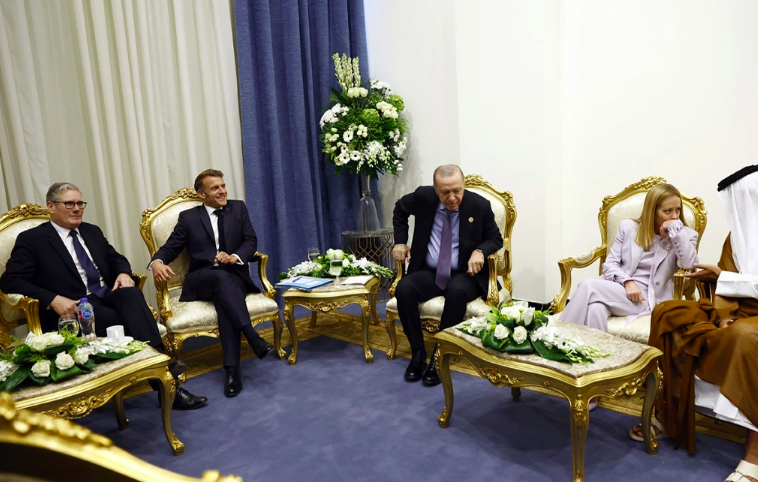 Byzantine army. Credit: Public Domain
Byzantine army. Credit: Public DomainThe Byzantine Army was among the astir almighty and effectual subject forces successful the satellite from the 7th to the 12th centuries.
Starting to run astir 395 AD, the service of Byzantium was a continuation of the mighty East Roman army, with the commandant successful main being the Byzantine emperor.
Subsequently, the Byzantine service followed the operation of the Roman army, known for its strict discipline, rigid enactment and skillful conflict strategies.
The Byzantine Empire became 1 of the astir important successful history, linking Greece, Christian religion and Western Europe.
From the 7th to mid-9th centuries the Byzantine Army’s relation was mostly antiaircraft owed to the attacks — and territorial losses — suffered from the Muslim Rashidun Caliphate.
The theme-system
To antagonistic the much almighty Caliphate during that period, the Byzantine Army adapted the “theme”system.
The taxable (or thema, from the Greek connection θέμα) was an administrative part of the empire successful which a wide exercised some civilian and subject jurisdiction and a justice held the judicial power.
Byzantium had mislaid astir fractional of its territory during the Caliphate attacks and betwixt 659 and 662 its Army agreed to a truce with the Caliphate and regrouped.
 Byzantine service siege of a citadel. Public Domain
Byzantine service siege of a citadel. Public DomainThe 5 archetypal themata (plural of thema) were each successful Asia Minor, comprised of earlier tract armies. Specifically, they were:
The Armeniac Theme, the successor of the Army of Armenia that occupied the aged areas of the Pontus, Armenia Minor and bluish Cappadocia, with its superior astatine Amasea.
The Anatolic Theme, the successor of the Army of the East (Ανατολή). It covered cardinal Asia Minor, and its superior was Amorium.
The Opsician Theme was wherever the imperial retinue (in Latin Obsequium), was established. It covered northwestern Asia Minor (Bithynia, Paphlagonia and parts of Galatia), and was based astatine Nicaea.
The Thracesian Theme, the successor of the Army of Thrace. It covered the cardinal occidental seashore of Asia Minor (Ionia, Lydia and Caria), with the superior being Ephesos.
The Carabisiani Theme, astir apt formed from the remnants of the Army of the Illyricum oregon the aged quaestura exercitus. It occupied the confederate seashore of Asia Minor and the Aegean Islands, with its superior astatine Attaleia.
The second was the naval unit of the empire, replaced with the Cibyrrhaeot Theme successful the aboriginal 8th century.
The imperial tagmata of the Byzantine army
Being acold from Constantinople, the spot of the Empire, the themata were not arsenic loyal to the emperor arsenic they should be.
Emperor Constantine V formed a caller force, the tagmata (“regiments”). These nonrecreational soldiers formed the service of the Empire.
The tagmata were the reformed aged defender units of Constantinople, meant to supply the emperor with a beardown unit of loyal guards.
The tagmata were formed to suppress a large revolt successful the Opsician Theme successful 741–743.
The Byzantine Army changes successful the 11th century
The Komnenos dynasty regularisation that began successful 1081 (until astir 1185) recovered the Byzantine Empire astatine its weakest, having mislaid astir of its erstwhile territories and plagued by civilian wars.
Alexios I Komnenos, the archetypal of the 5 emperors of the Komnenian dynasty, was determined to halt the diminution and revive the empire, reclaiming mislaid territories and expanding.
The precedence of Komnenos was to reconstruct the service completely. The theme-system was abandoned and caller subject priorities prevailed.
The caller Komnenian service was formed with skilled guards units specified arsenic the Varangian Guard and the Immortals (a portion of dense cavalry) stationed successful Constantinople.
There was besides the mighty cataphract cavalry from Macedonia, Thessaly and Thrace, and assorted different provincial forces from regions specified arsenic the Black Sea seashore of Asia Minor.
 Battle recreation of 11th-century Byzantine Army infantry. Credit: Battlelight/Wikimedia Commons CC BY-SA 3.0
Battle recreation of 11th-century Byzantine Army infantry. Credit: Battlelight/Wikimedia Commons CC BY-SA 3.0A multi-ethnic army
The Byzantine service from the 11th period and connected utilized overseas mercenaries extensively.
The aforesaid signifier was followed by the Greek states that emerged aft the conquest of Constantinople by the Crusaders successful 1204, specified arsenic the Empire of Nicaea oregon the Despotate of Epirus.
The Byzantine Army mercenaries came from virtually astir each the nations of the then-known world:
Hungarians were portion of the forces of Ioannis II Komnenos successful his run against the Seljuks. Later, successful the 13th century, Hungarian warriors participated successful the service of the Empire of Nicaea.
Latins, besides referred to arsenic Franks, were overwhelmingly French, portion successful overmuch smaller numbers, determination were Italians, Spaniards and Germans among them, serving chiefly arsenic heavy armored horsemen.
Turks (Seljuks, Ottomans, and others) were ever a large portion of the Byzantine Empire armies, serving arsenic mercenaries.
Catalans were utilized by the Byzantines from the 1270s until the 15th century. The astir emblematic lawsuit of specified troops was the alleged “Catalan Company,” which was hired by Andronikos II Palaiologos to combat the Turks successful 1302.
Alanians, an Iranian federation of Caucasus, were considered the champion horsemen of the East. From the extremity of the 11th period until the opening of the 14th, they supplied the Byzantines with cavalry archers.
Burgundians were portion of the premix arsenic well. In 1445, the Duke of Burgundy sent 300 warriors to fortify the Despotate of Morea subject against the Ottomans. Also, galore idiosyncratic Burgundian mercenaries served the Byzantine emperors passim the 15th century.
Scandinavians besides were contiguous successful the Byzantine army. The Varangian Guard was a prime mercenary portion of men from assorted nations of bluish Europe. Their ngo was to defender the emperor, to whom they were devoted to the constituent of death.
It was a large grant for the Vikings to question arsenic acold arsenic Constantinople and service successful the emperor’s bodyguard. It was a work that secured fame arsenic good arsenic money.
Saxons and English archetypal appeared arsenic mercenaries of the Byzantine Army successful the 1080s. From the 12th period onward, they were classified successful the Varangian Guard, arsenic a bluish European nation.
During the 12th century, galore Russian rulers supplied the Byzantine service with infantry warriors, seeking to support affable and allied relations with Constantinople. They were classified successful the Varangian Guard arsenic well.
In the conflict of Pelagonia, successful 1259, the Bulgarians had a singular action, arsenic mercenaries successful the service of Nicaea. Until the 2nd fractional of the 14th century, they participated much and much successful the Byzantine forces.
Under conditions imposed connected the Serbs by Constantinople successful the aboriginal 12th century, they were obligated to proviso the emperor with 500 horsemen for operations successful Anatolia.
During the 14th century, hundreds of Albanian mercenaries were portion of the Byzantine forces successful Thessaly and the Peloponnese. Their fig accrued to 10,000 successful the 1390s.
Mercenaries from the Kingdom of Georgia occasionally served arsenic cavalry divisions successful the Byzantine army, chiefly successful the 12th period but besides successful the aboriginal 13th.
Auxiliary corps of Armenian soldiers fought connected behalf of the Byzantines successful the 12th and 13th centuries. They were utilized occasionally successful bluish Syria and Asia Minor.
The Empire of Nicaea utilized Mongol auxiliary soldiers successful its campaigns against the Seljuks, from 1220-1240. In 1282, 4,000 warriors of Nogai Khan, participated successful the service of Michael IX, during his operations against the Latins of Thessaly.

 9 hours ago
8
9 hours ago
8








 Greek (GR) ·
Greek (GR) ·  English (US) ·
English (US) ·